Last Updated on: 4th March 2021, 08:48 am
In many big cities throughout the world, public murals are seen as a way of beautifying dull and gray concrete jungles. But in southern Egypt’s Aswan, the colorful murals mesh beautifully with the region’s natural surroundings. Street art, in fact, has long been a part of traditional Nubian culture.
In the following guide to Aswan street art, we’ll be covering the city’s modern murals along with the best places to see colorful Nubian houses.
The markers in the map above are just approximate locations. Walk around the general areas and you’re bound to discover a lot of interesting art. Most of central Aswan can easily be explored on foot.
Central Aswan
The pictures presented below roughly follow Aswan street art as seen when heading south to north. Many of the murals can be found along Aswan’s main road, Kornish Al Nile.
In the southern part of Aswan, near Aswan Stadium, the road passes through the middle of the city. But shortly after the Nubian Museum, it veers to the left and becomes the prominent road along the Nile River.
From this point onward, you can find many interesting murals on the nearby side streets as well, not far from the main souk, or bazaar.
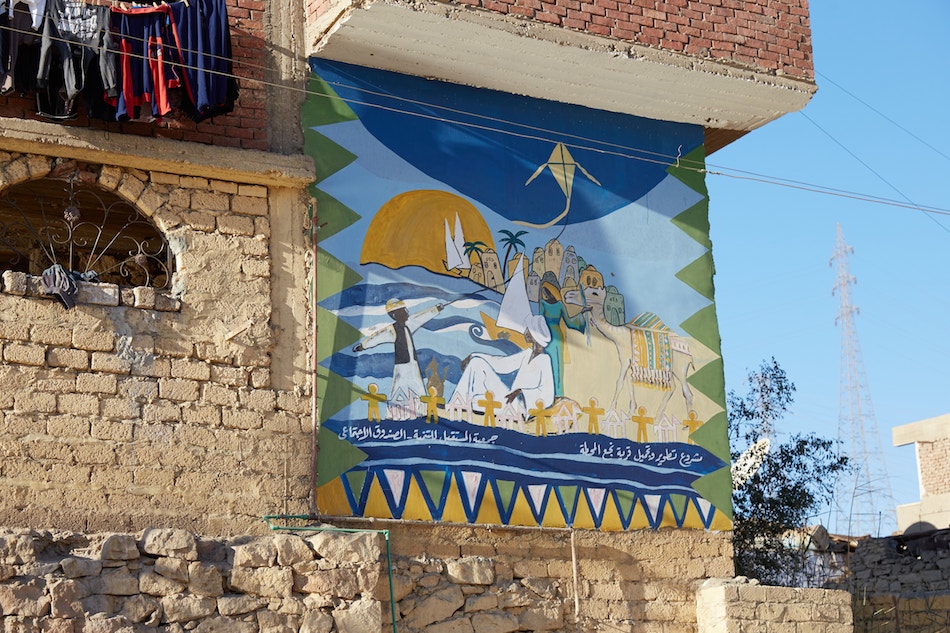
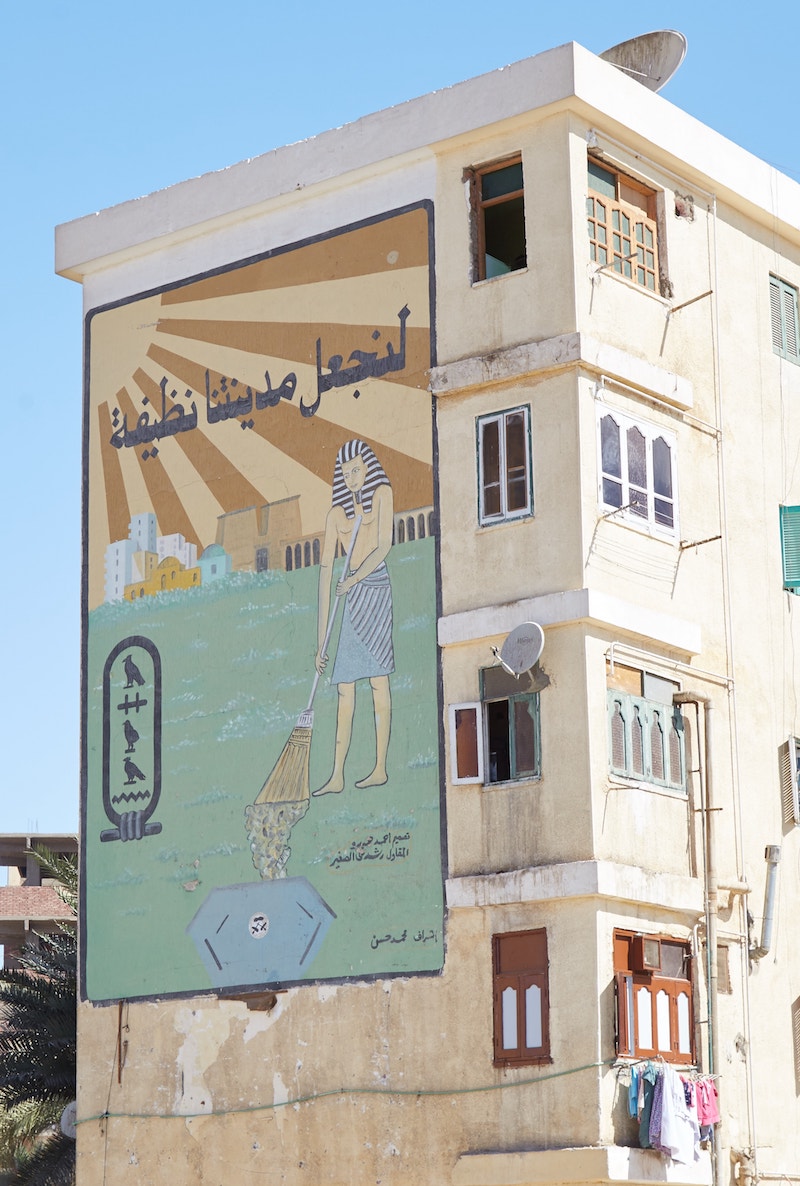
Many of the murals around Aswan depict local life. They often show Nubian families sitting together and playing music. Landmarks and scenery from around Aswan also make frequent appearances. And ancient Egyptian imagery is another common motif.

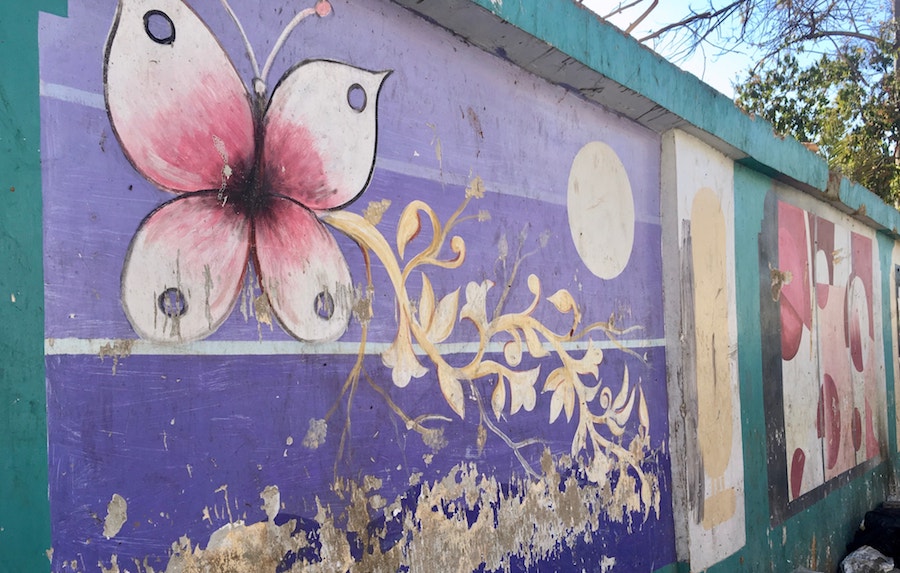
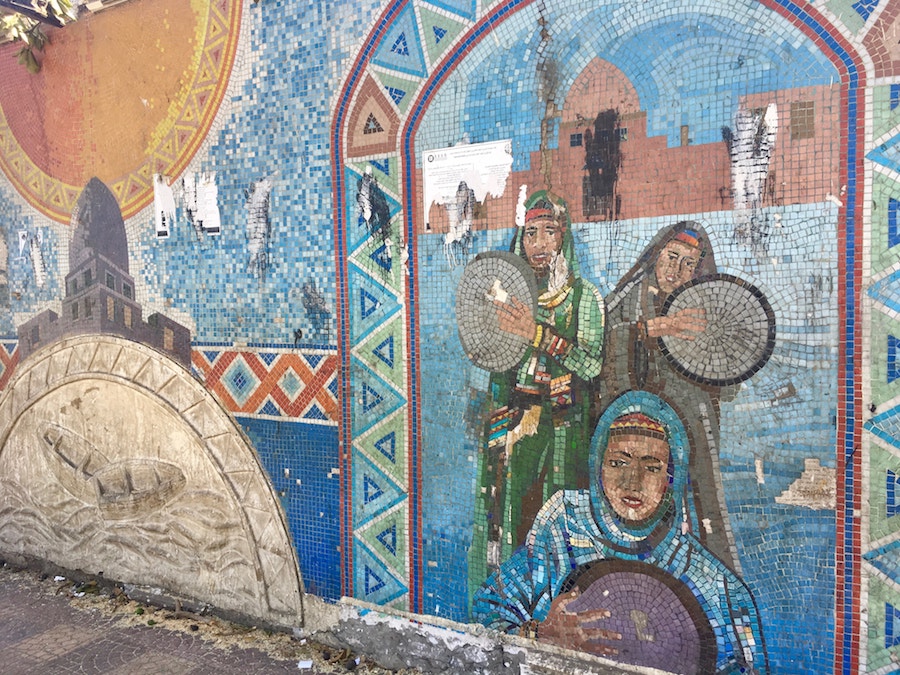

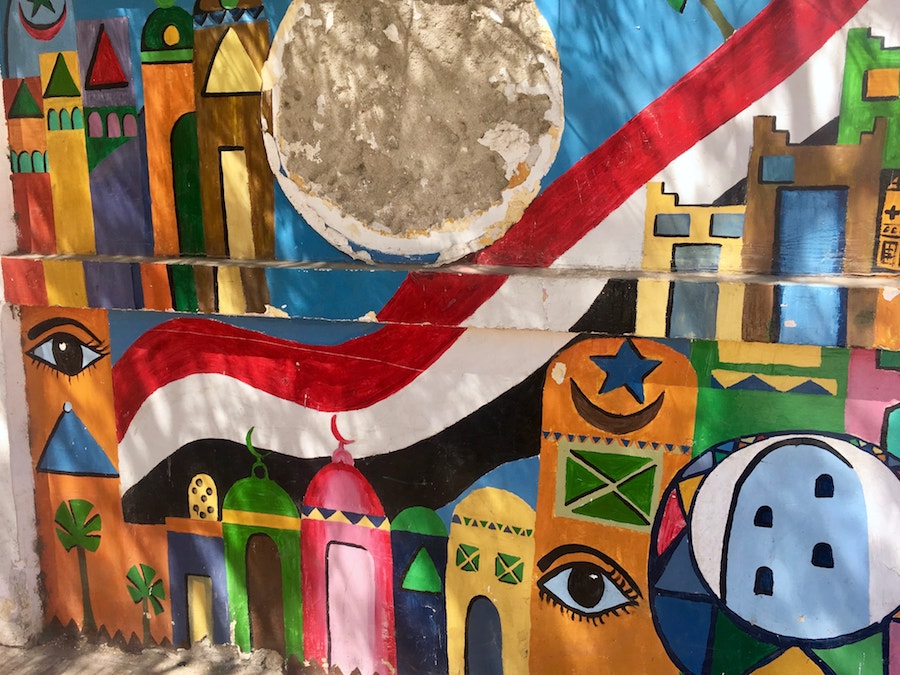

One of Aswan’s most impressive murals is located outside a building across from the McDonald’s (the one just beside the Nile). It’s a long mural that features portraits of two women in addition to some ankh symbols and geometric patterns.
All the way to the left, meanwhile, is what appears to be Trajan’s Kiosk at Philae Temple.
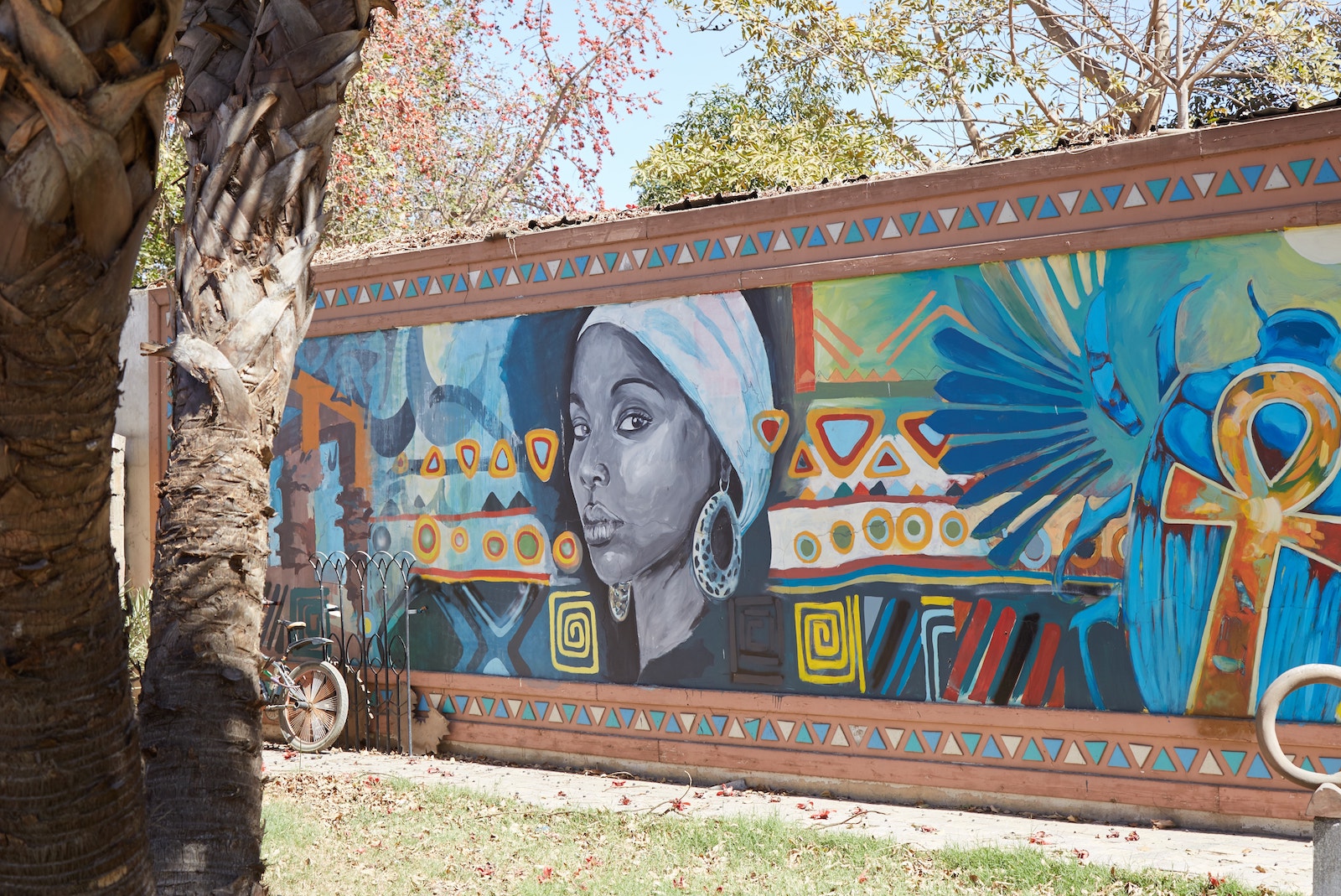
The eye-catching mural appears contemporary but with many traditional Nubian motifs. But it’s unclear who painted it. Unlike many other cities around the world, many of Aswan’s murals lack signatures.
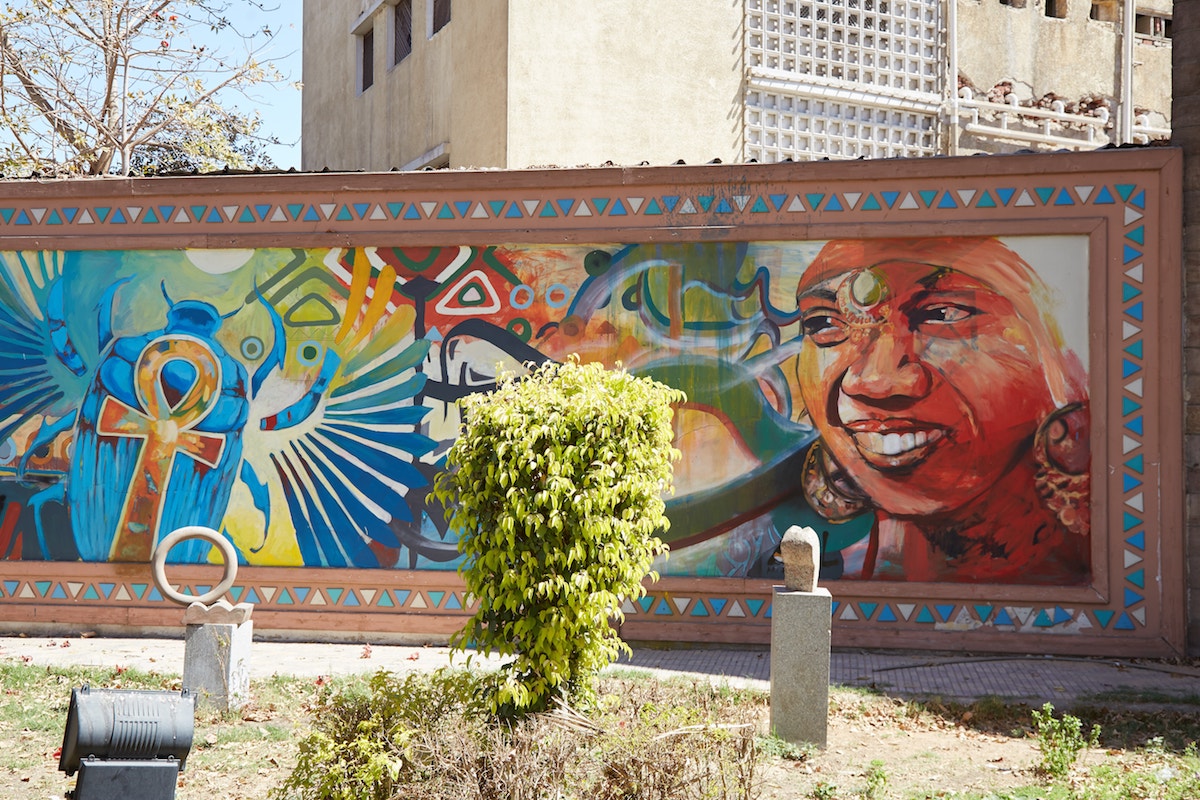
Just nearby is an impressive mosaic piece, one of several throughout the city. It features Nubian architecture and some feluccas cruising along the Nile.
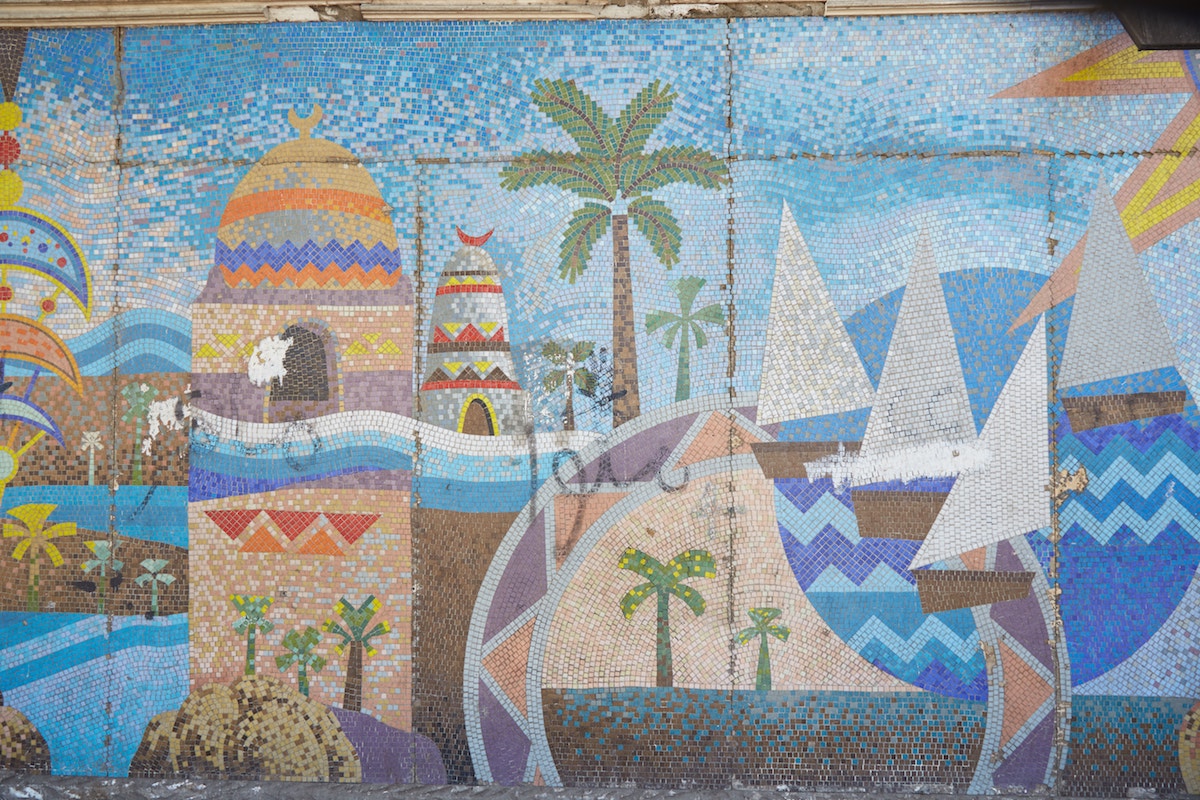
Numerous murals around town show scenes of Nubians sitting by the river or of pretty desert scenery. While certainly pleasing to the eye, I sometimes found the subject matter puzzling.
In congested and polluted metropolises like Cairo or New York, an artist might paint a tranquil nature scene to help calm the viewer’s nerves. But here in Aswan, you can just walk over to the river and see those scenes right in front of you!
In contrast to the ‘escapist’ art of larger, more alienating cities, Aswan street art acts as a mirror of the local environment.


Unable to read Arabic, the significance of some of the pieces was often lost on me. I wasn’t always sure if the works contained a deeper religious or political message.
But one thing is certainly clear: the local artists of Aswan take great pride in their culture, traditions, and city.


Not far from the railway station, I spotted what seemed to be replicas of traditional Nubian houses. And further along the road, I found a depiction of the Abo Elhawa Mausoleum located just across the river.

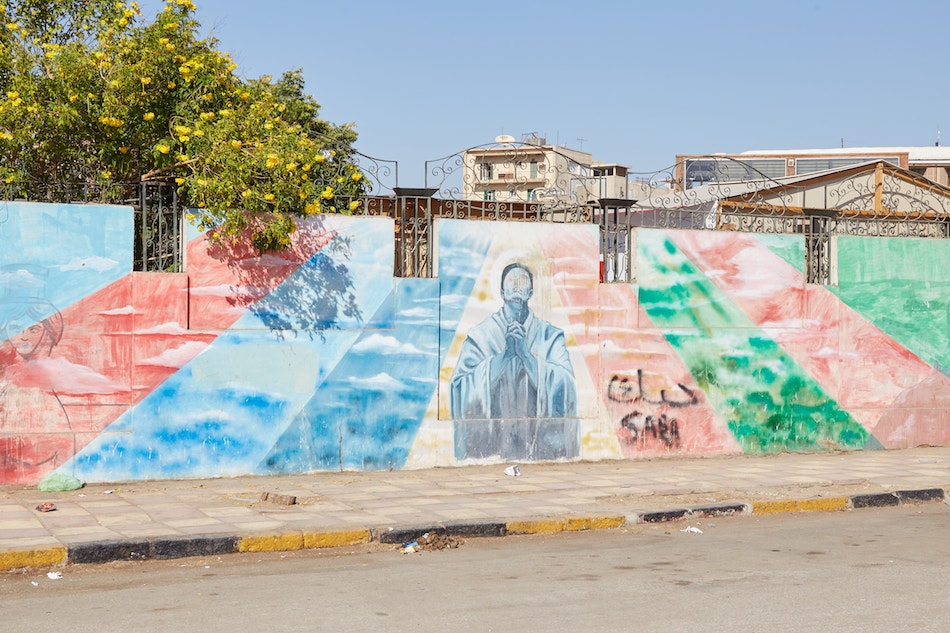
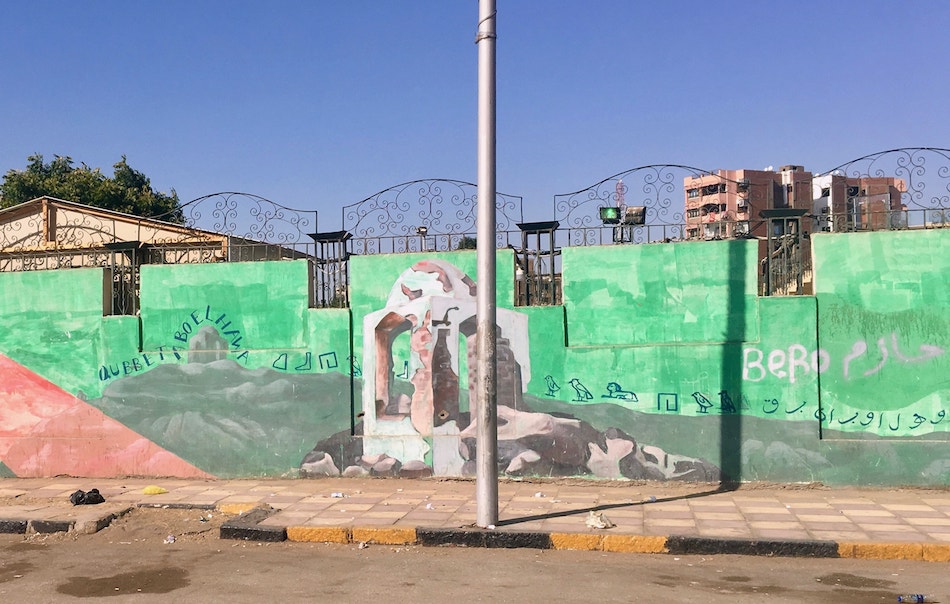
The Garb Soheil Nubian Village
With the construction of the Aswan High Dam in the 1960s, many traditional Nubian lands were flooded by Lake Nasser. As a direct result, dozens of Nubian families were relocated to new settlements along Aswan’s west bank. And they brought their culture and traditions with them, including their bright and colorful architecture.
The Garb Soheil Nubian Village is Aswan’s most-visited. But it’s labeled by many as a tourist trap. Those looking for a truly authentic (i.e. tourist free) glimpse of local Nubian life may end up disappointed.
But if your main goal is checking out traditional Nubian house decorations and impressive modern murals, you won’t leave disappointed.
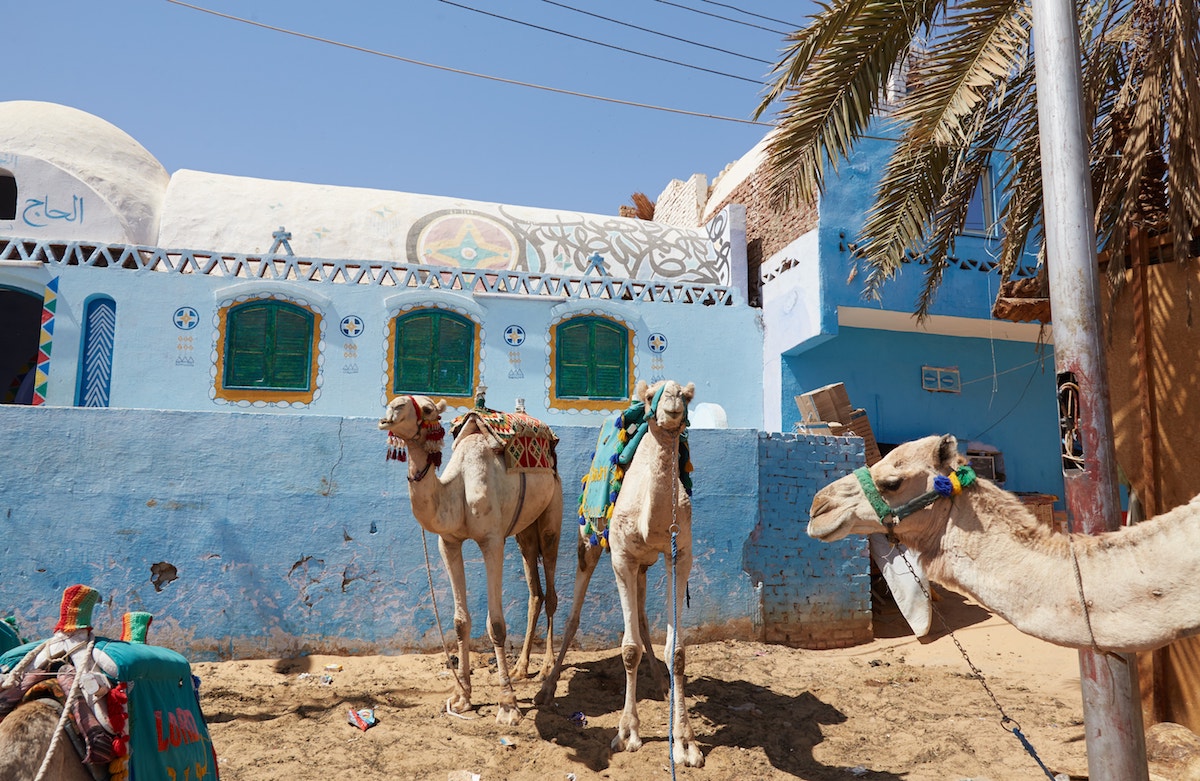
GETTING THERE: There are many organized tours which can take you to Garb Soheil, but expect to pay around $20 USD for the trip. Luckily, you can also get there via public transport for practically nothing.
There’s a minibus that goes directly to the village that departs from a road nearby El-Tabia Mosque (see the map above for the exact location). There are a number of other minibuses that depart from here, so you’ll have to ask around for Gharb Soheil (and ignore the taxi drivers who tell you the bus doesn’t exist).
The ride should only cost 3 EGP. Note that while the bus drives along the main road all the way south, it will only pick people up from near El-Tabia mosque. But on the way back, you can ask them to drop you off elsewhere.
You can also haggle for a private boat to take you to the village from Seheil Island or probably even from central Aswan.
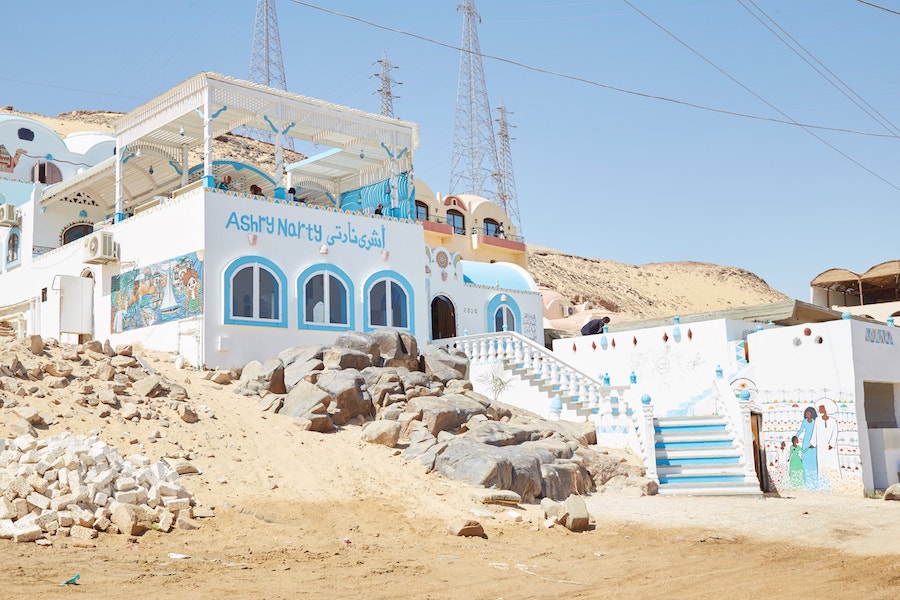

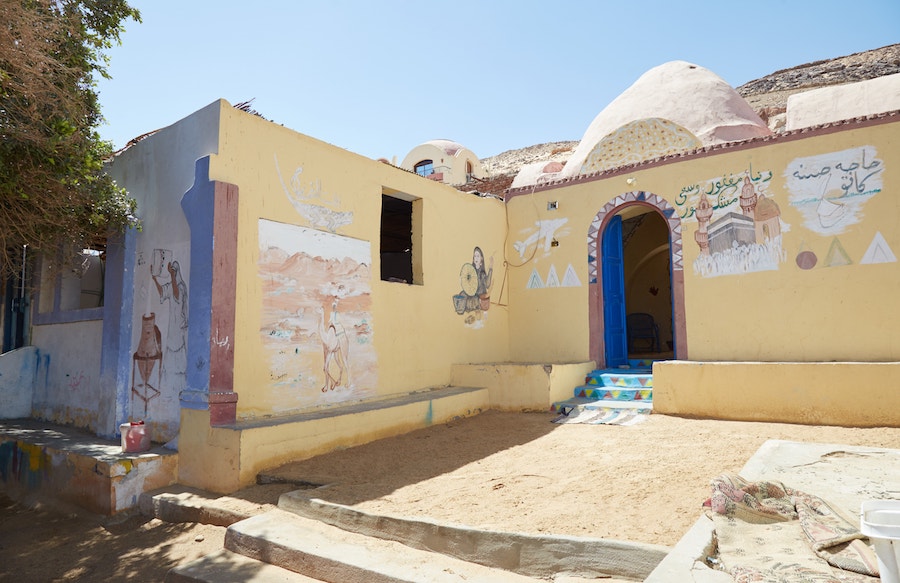
The Nubians, who’ve inhabited the region stretching northern Sudan to southern Egypt for millennia, are known for their colorful houses. They’re typically built of mudbrick and then covered in lime plaster, over which families add decorations using colorful dyes and paints.
Nubian houses often feature geometric patterns and animal motifs. And walking around the village, it appears that owners take pride in making original decorations distinct from their neighbors.
Supposedly, however, according to this article, the ‘traditional’ style of Nubian house painting is no older than the early 20th century! Whatever the case may be, they’re still pretty to look at. And within Egypt, they can only be seen in this particular region.
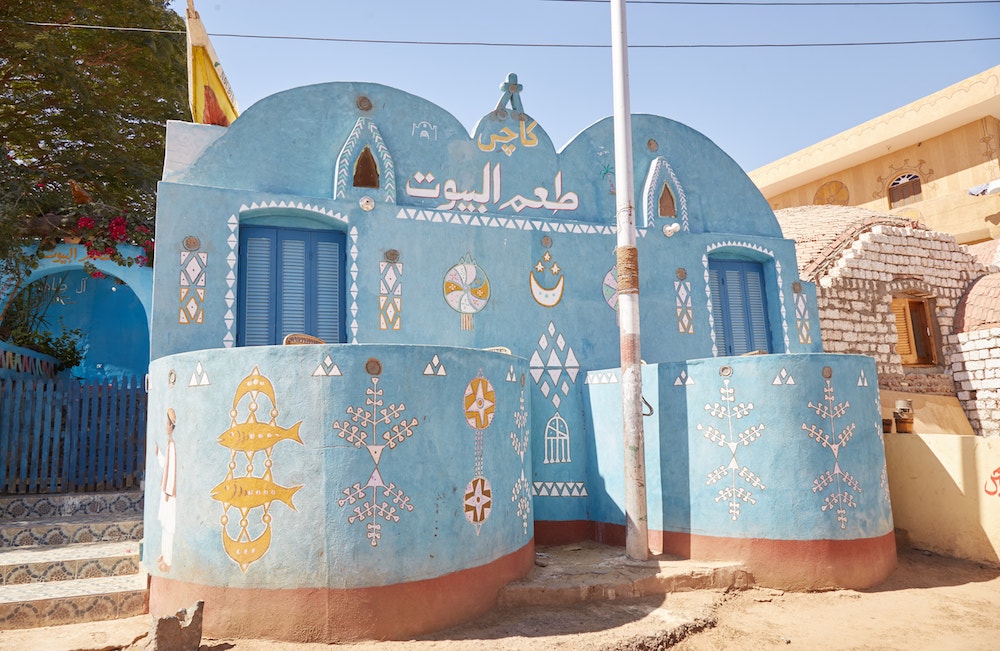
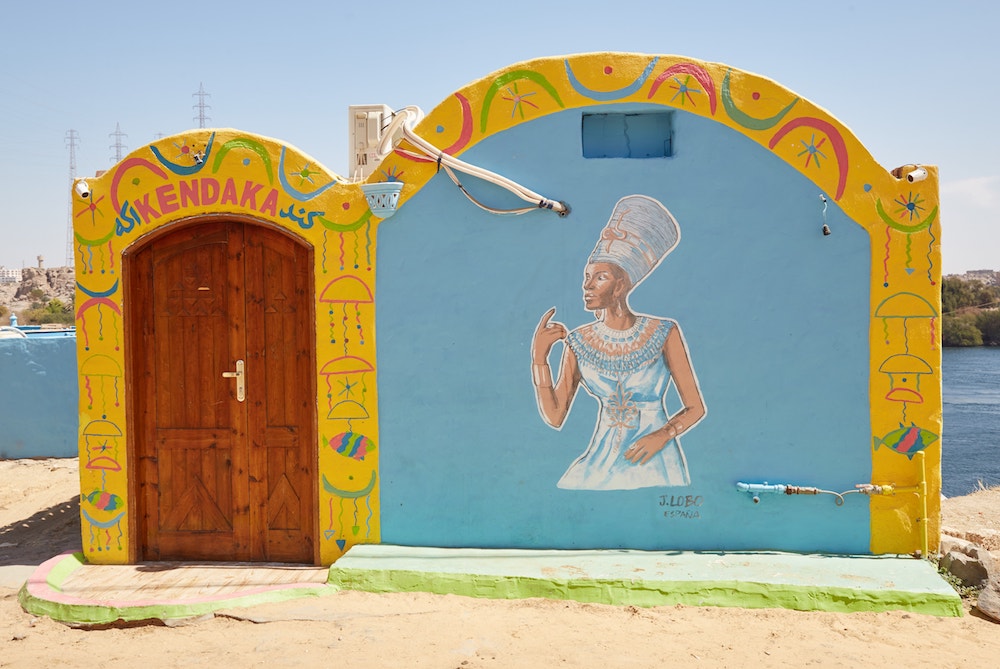
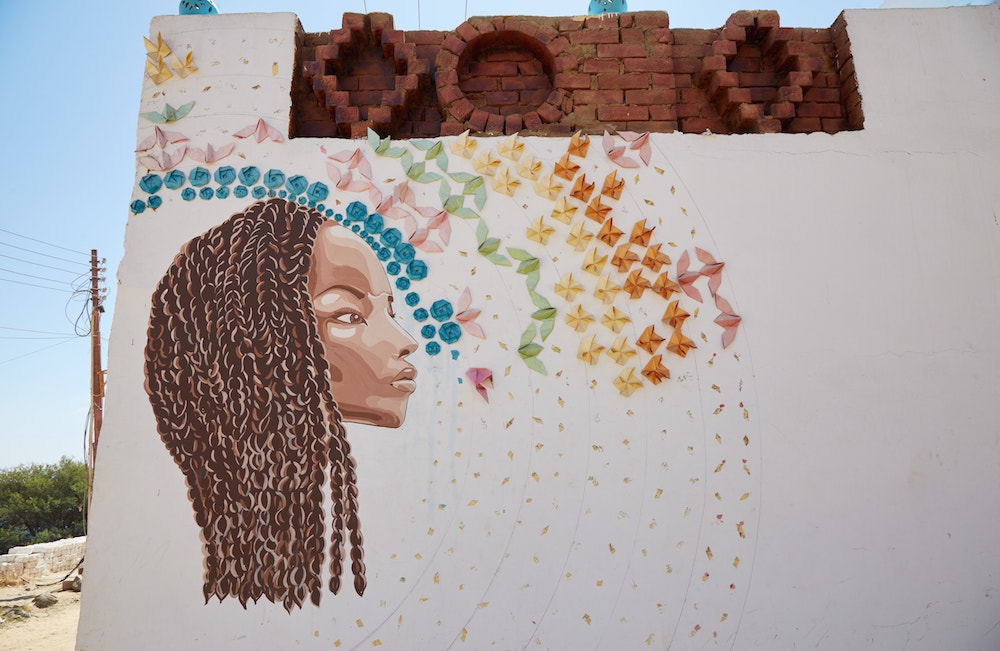
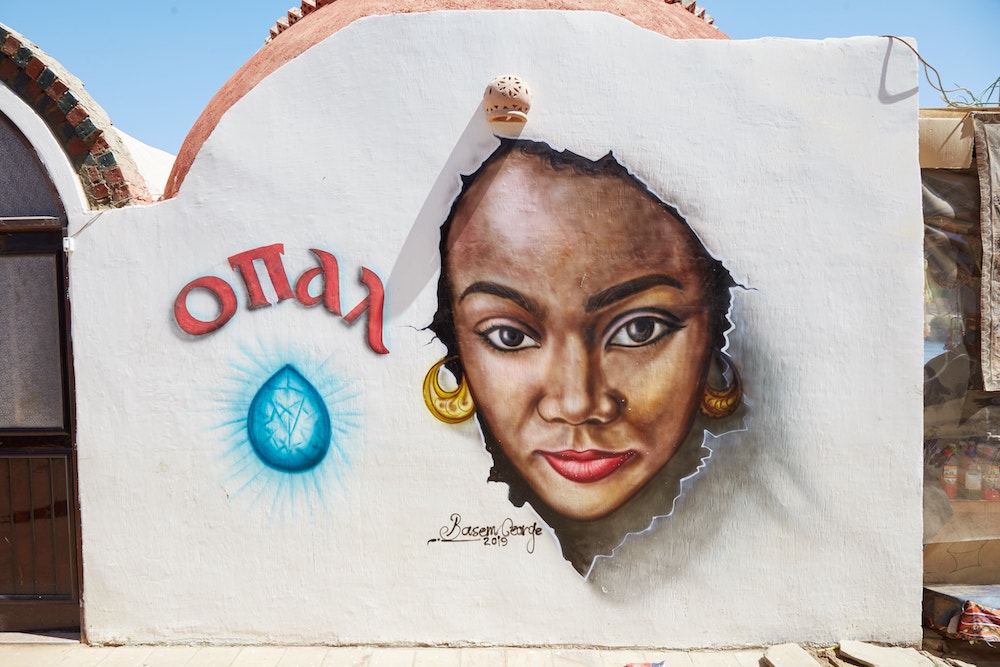
In addition to colorful house decorations, Garb Soheil also features a plethora of modern murals, many of which are realistic portraits.
Unlike most of the art around central Aswan, some of these murals have been signed. Don’t miss the piece by Spanish artist J. Lobo in addition to one by an artist named Basem George.
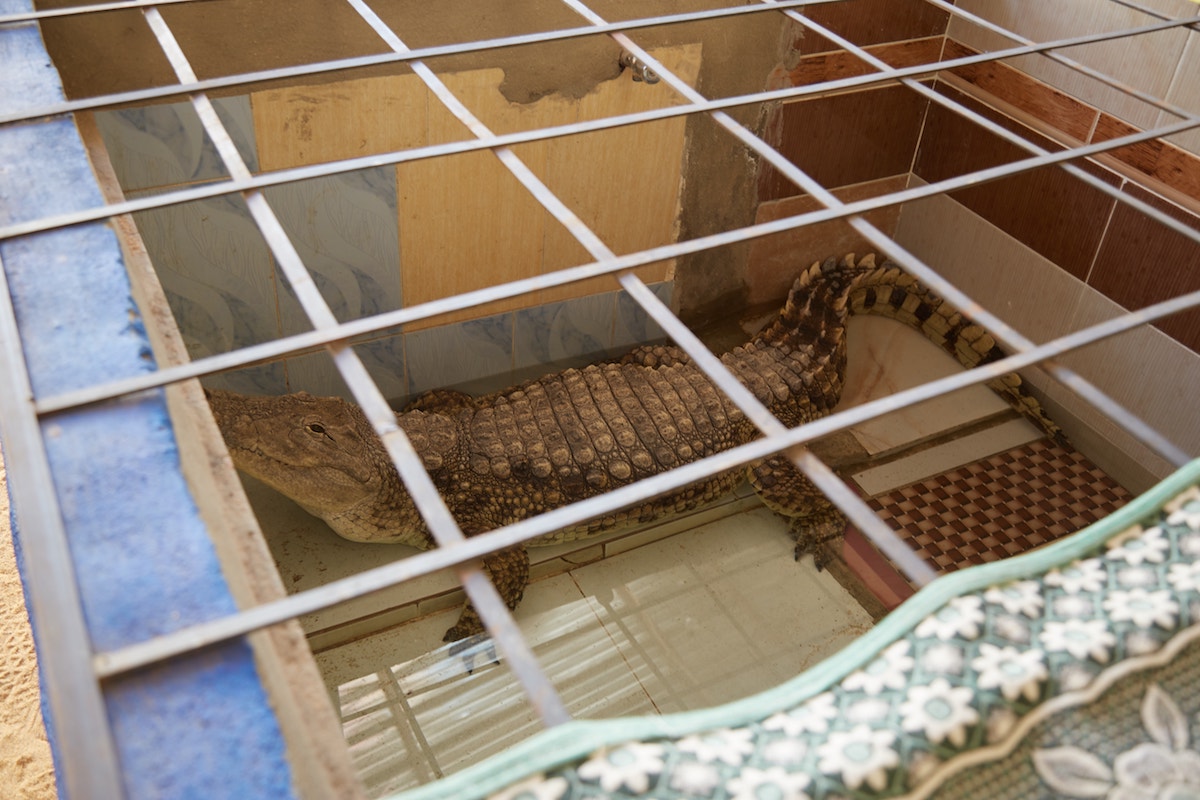
The Nubian Village is full of little cafes and coffee shops. And if you really want to soak up the vibe, there are homestay opportunities in the area as well.
During my visit, I stopped inside a random coffee shop situated within a family’s home. And there, just chilling in front of my table, was a live crocodile!
Reverence for crocodiles dates back to ancient times, and the local attitude toward crocodiles was expressed in the worship of Sobek, a fierce protective deity and solar symbol.
The custom of keeping crocodiles as pets has been around for centuries in Nubia. But residents of the Nubian villages have also come to realize that the peculiar practice is a great way to draw in foreign tourists. As such, you’ll find many houses around the Garb Soheil promoting their ‘pets.’
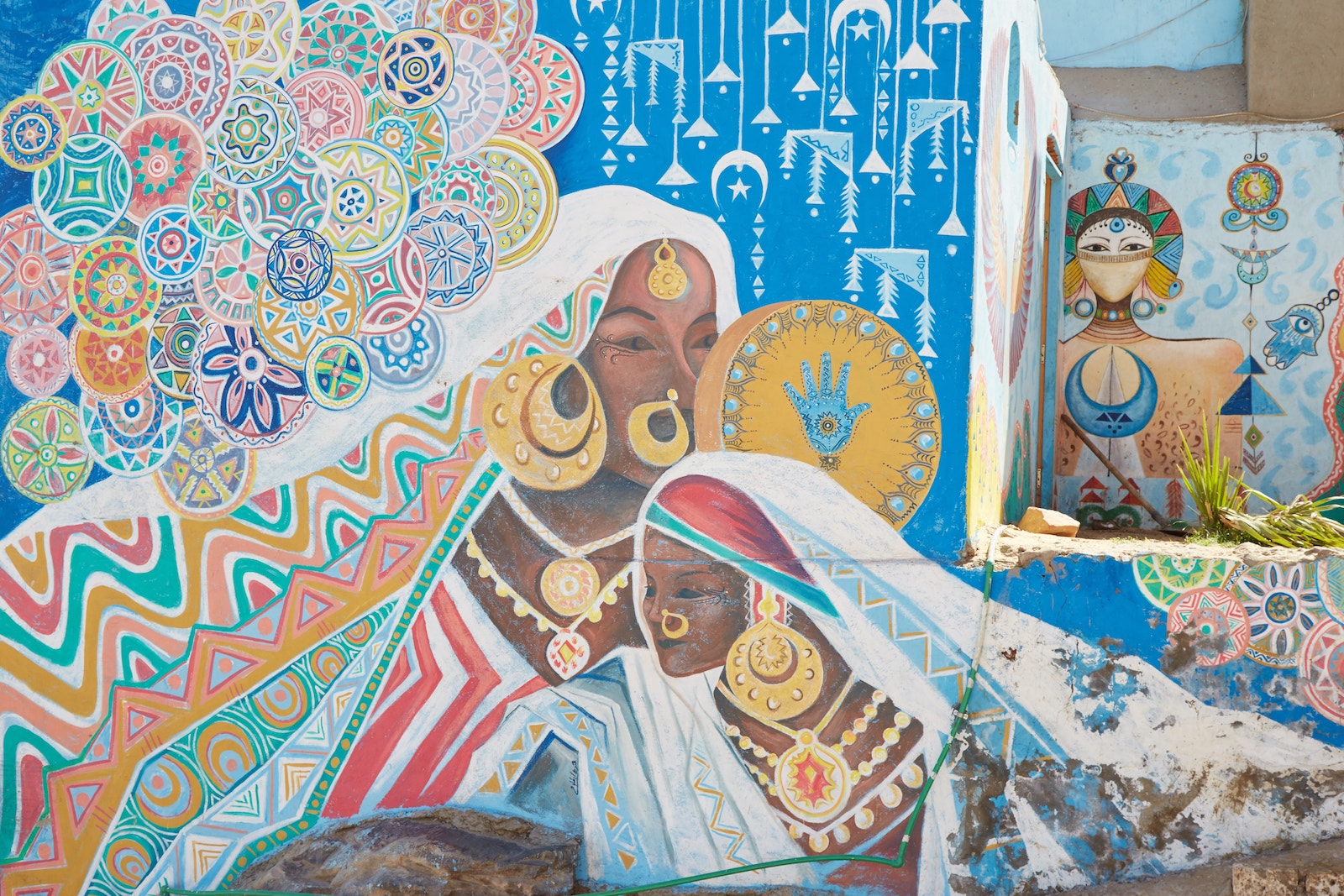

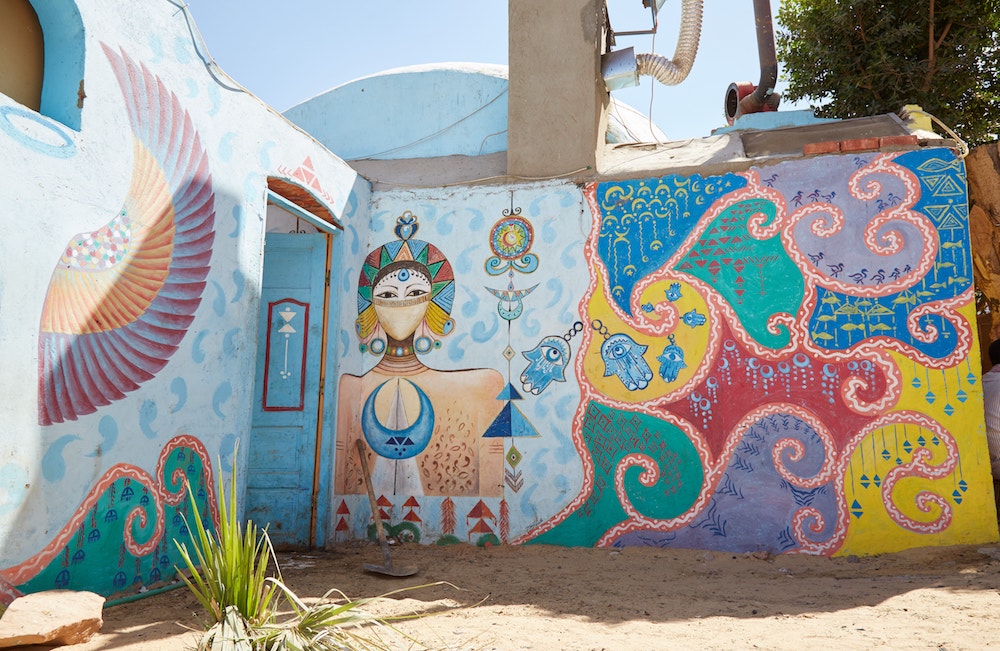
The most impressive mural of the Garb Soheil Nubian Village can be spotted near the pier. It takes over an entire house and depicts a woman and her daughter in traditional dress.
The duo are surrounded by colorful geometric patterns, while additional murals can be found on the adjacent walls.


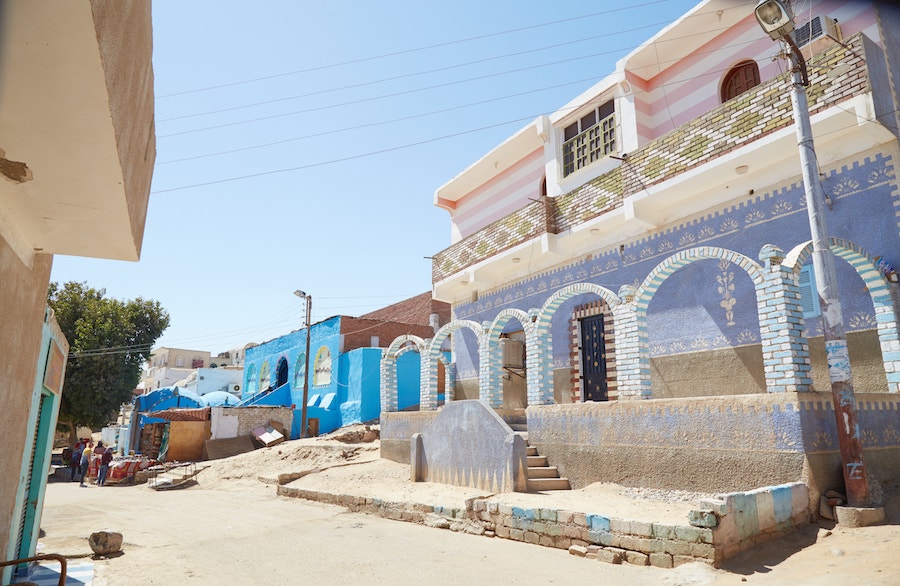
Before heading back, be sure to take a walk around the smaller side streets to see even more colorful houses. When finished, simply head back to where you were dropped off to catch the minibus back to Aswan.
The Islands
Island hopping is one of the best things to do during your time in Aswan. While Elephantine and Seheil islands have a lot in store for archaeology lovers, they’re also home to sizeable Nubian communities. And this is another good place to check out authentic Aswan street art.
Elephantine Island
When finished with the Elephantine archaeological site in the south of the island, be sure to spend some time walking through its central districts. The narrow alleyways of the Nubian village contain plenty of murals.
They’re not as impressive as what you can see elsewhere around the region, but they’re still fun to seek out as you explore the island. In addition to animal motifs, the street art here largely depicts daily life.
There’s said to be some larger murals around the Movenpick resort in the northern part of the island, but I didn’t end up making it there.

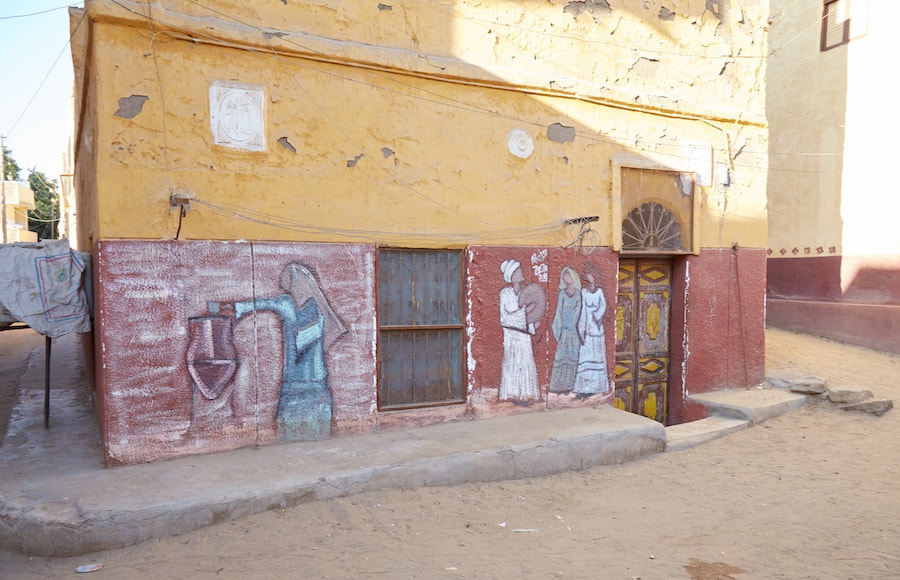
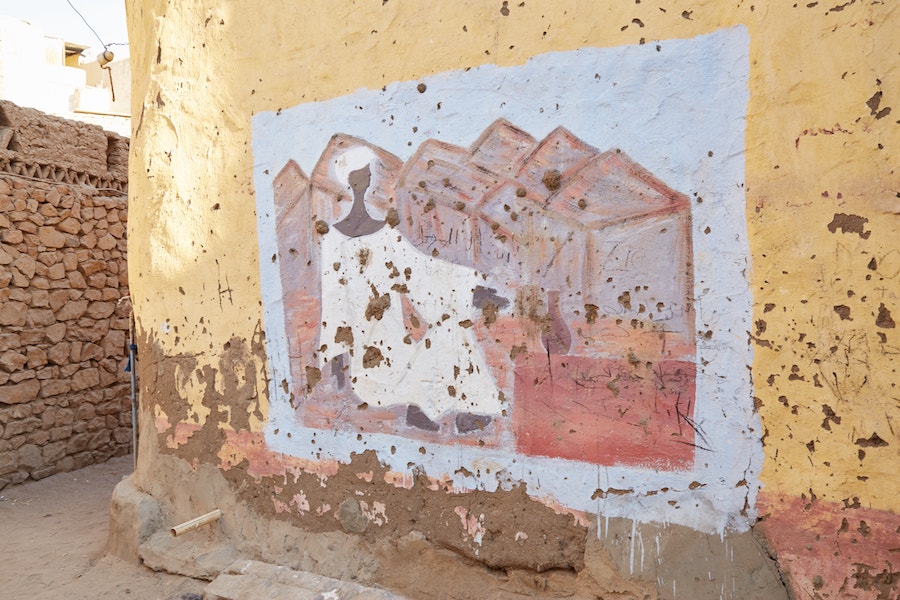
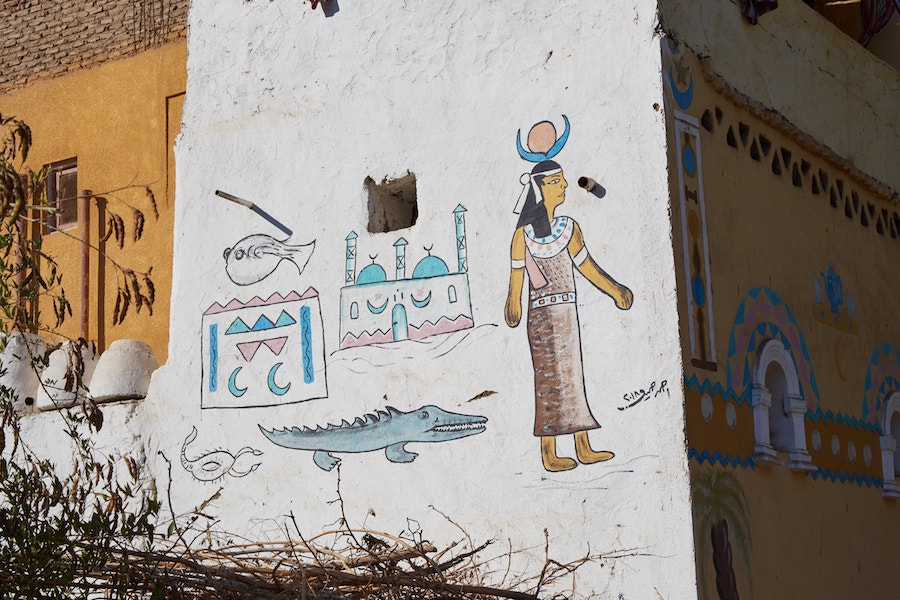
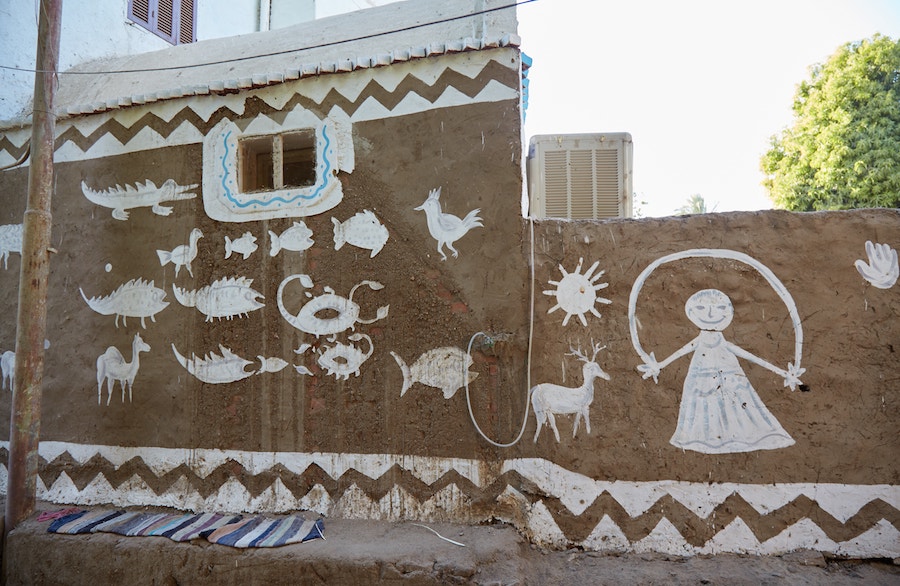
Seheil Island
Seheil Island is another historically important island. While home to a Nubian community, the residential part of the island isn’t really catered to tourists. However, there are several interesting murals you can spot on the island itself and also on your way there.
In addition to a few large murals close to the east bank pier, walk around the area of the island pier to spot some more. There are also some nice paintings on the wall of the island’s main cafe.
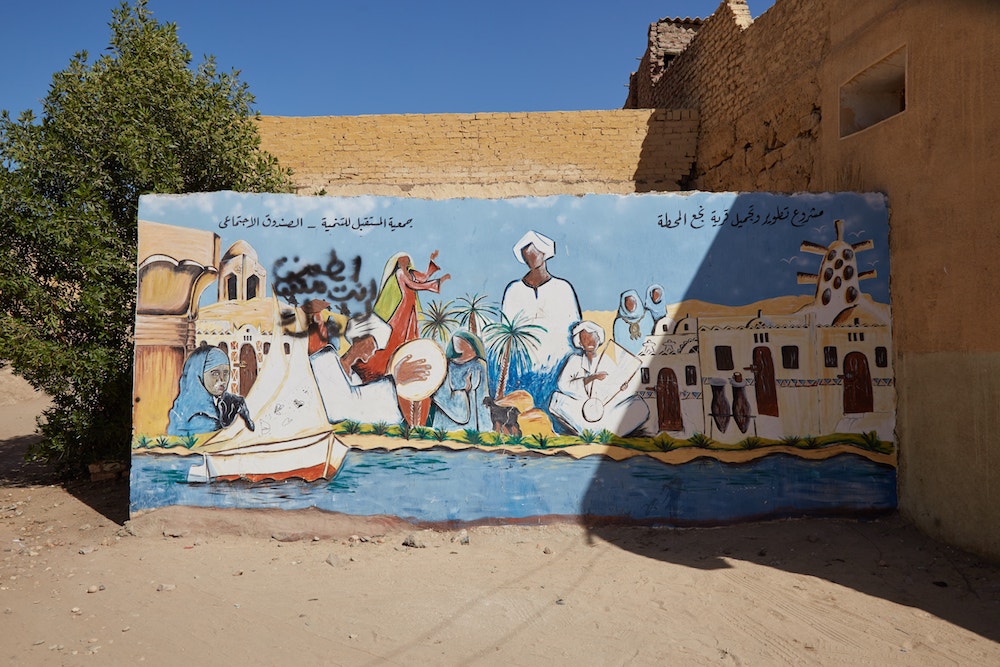


As mentioned above, most of the murals around Aswan have no signatures. If you know any of the artists behind the pieces pictured above, be sure to let us know!
Additional Info
When researching accommodation online, I was surprised to discover that hotels in Aswan are considerably more expensive than in other Egyptian cities.
While I cam across some reasonably priced and centrally located hotels, many of them seemed to have poor reviews. I went ahead and booked a midrange hotel on Elephantine Island, but the hosts never responded to any of my questions, leading me to cancel.
Eventually, I decided on a place called David Hostel located in the south of the city. While I’m not much of a hostel person, this turned out to be a good choice. Not only did I meet some nice people, but David the owner was incredibly helpful in regards to advice on sightseeing and transport. He was upfront and honest about all the different options and helps his guests get the local prices when possible.
While I thought it would be a bit out of the way, I found the location to be completely reasonable. It was close to places like Seheil Island, and most of the locations in central Aswan were still walkable. There were also plenty of decent and affordable restaurants nearby.
For those with more money to spend, there are lots more luxurious options around Aswan. The most famous of them is the Cataract Hotel, where Agatha Christie famously stayed when she wrote Death on the Nile.
Aswan isn’t that big. Aside from staying in the city center around the train station, Elephantine Island would be a good choice as well. It features plenty of hotels and guest houses while it’s just an easy ferry ride to the city center. It’s also home to a luxury resort called Movenpick.
Aswan can be accessed by plane, rail or car.
I got there from Luxor with a private driver. On the way I stopped at four locations (Esna, El Kab, Edfu and Kom Ombo). After Aswan I needed to return to Cairo, so I just hopped on an early morning train.
Strangely, when it comes to train travel in Egypt, it’s often impossible for a foreigner to buy the cheapest tickets in person at the station. However, it’s still perfectly legal for foreigners to ride any train. The trick is to just buy them online from the official Egyptian National Railways site and print them out before departure.
Here is an excellent resource for all train timetables in Egypt. It’s worth going for the nicest AC1 trains, which are still quite cheap. Snacks and coffee are sold onboard. But expect the entire cabin to reek of smoke, as people constantly use the space in between the train carriages as a smoking lounge.
If you’re not able to book online for some reason, here’s another solution: simply show up at the station, hop on the train and sit down. When the ticket inspector comes by, pay him. Strangely, while you can’t buy tickets from the ticket booth, this method is completely acceptable.
